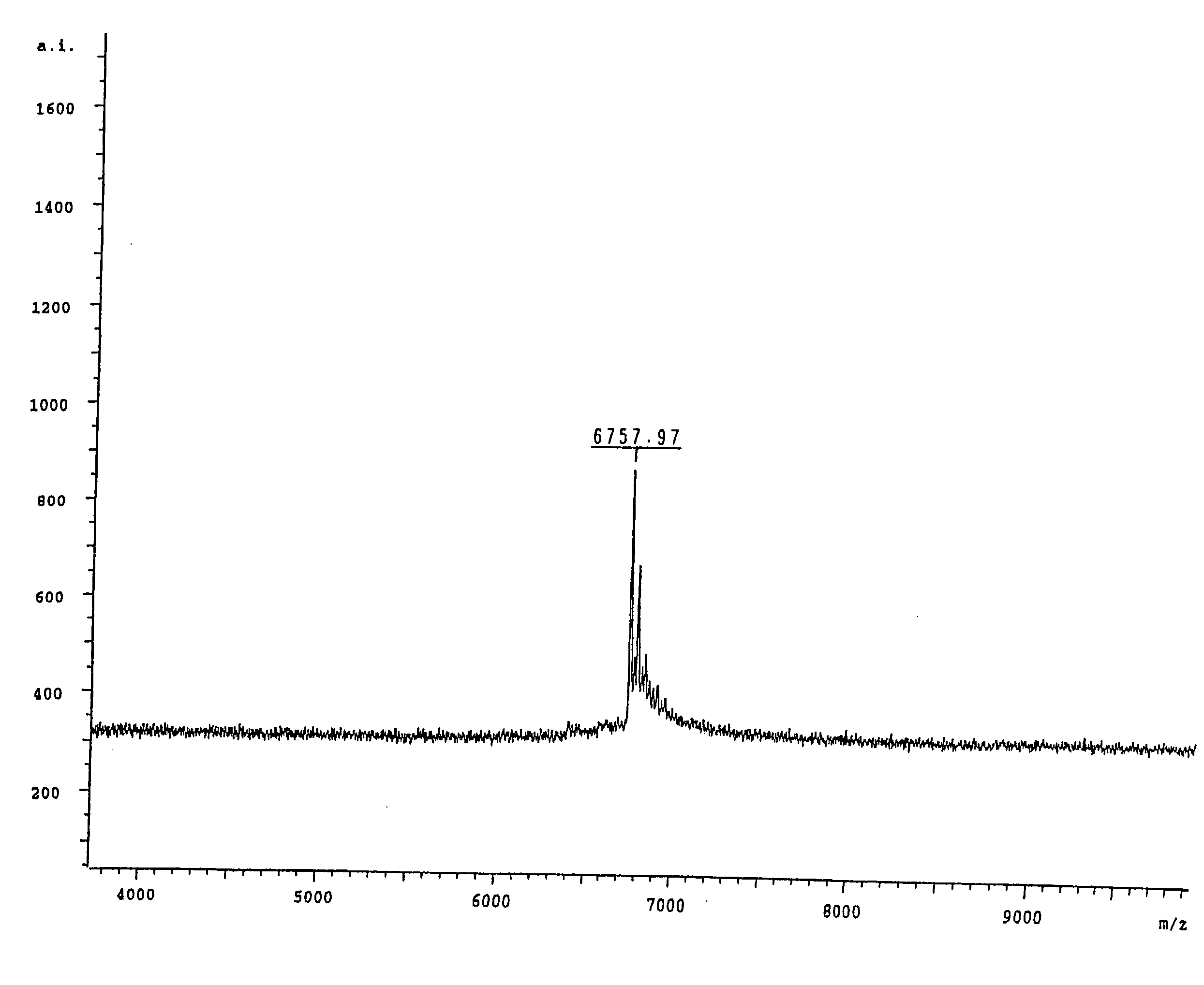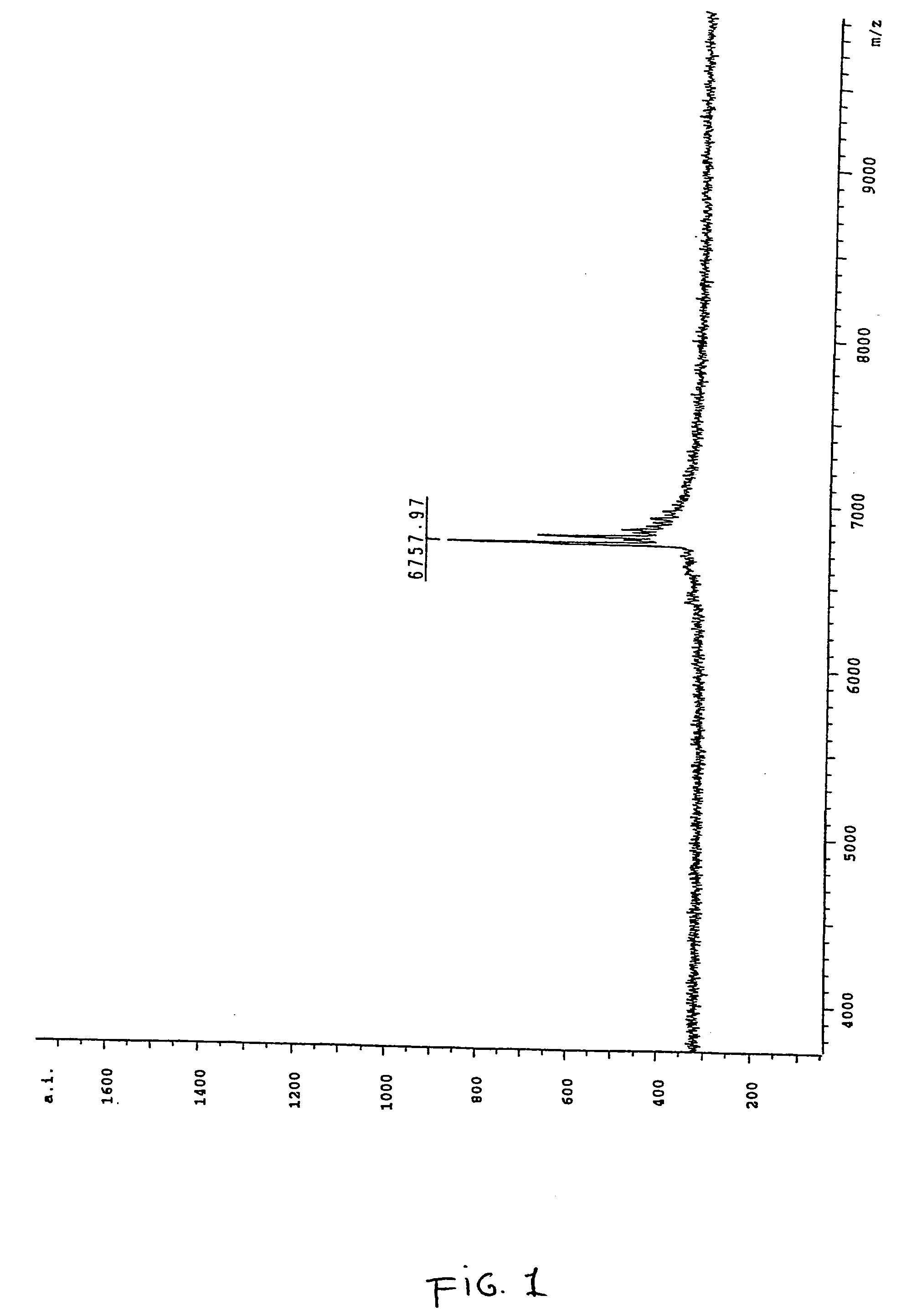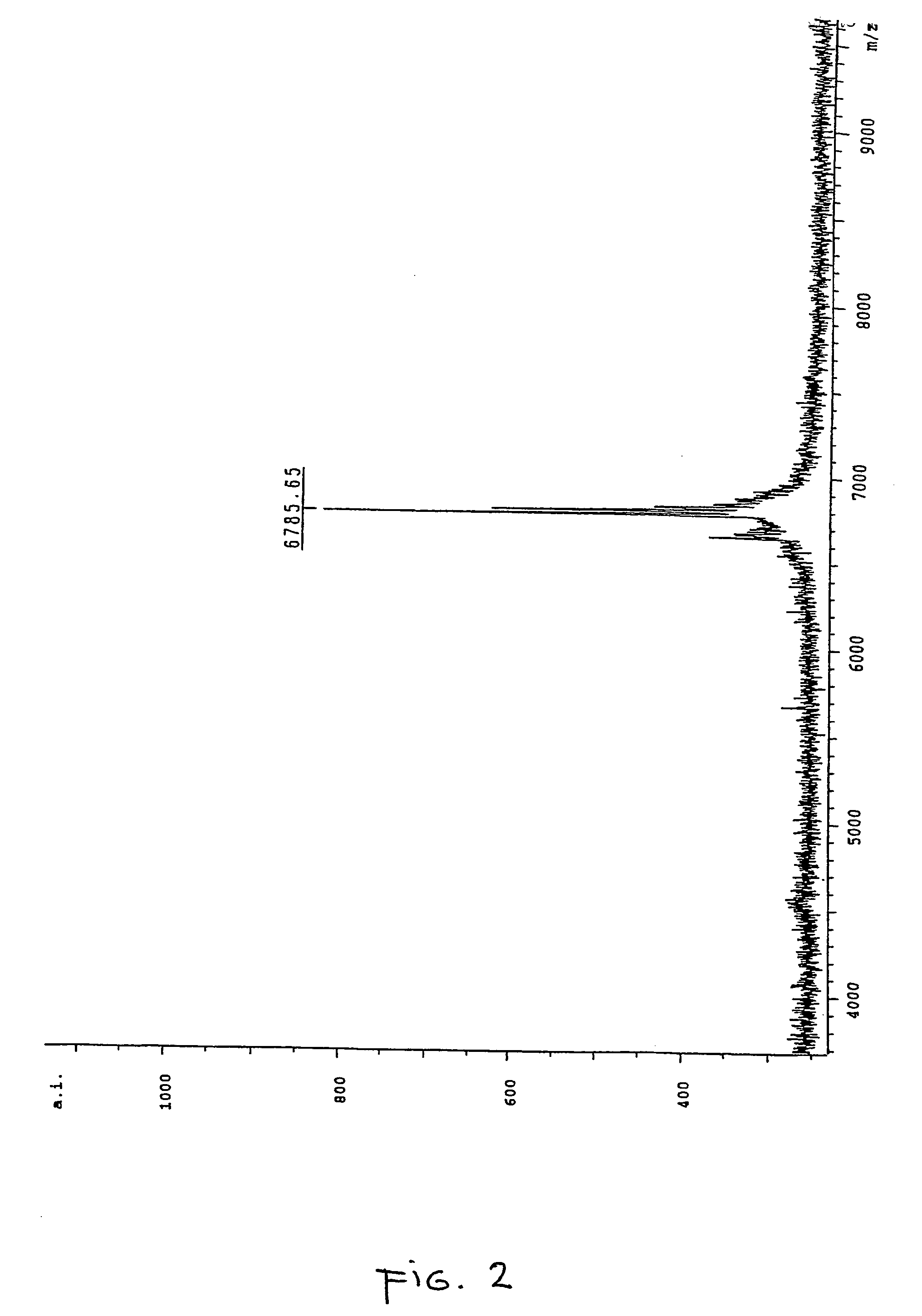Method for the analysis of methylation patterns within nucleic acids by means of mass spectrometry
- Summary
- Abstract
- Description
- Claims
- Application Information
AI Technical Summary
Benefits of technology
Problems solved by technology
Method used
Image
Examples
example 1
Methylation Retaining PCR Amplification
[0133] Genomic DNA commercially available from Promega is used in the analysis. A CpG rich fragment of the regulatory region of the GSTPi gene is used in the analysis. The DNA is firstly artificially methylated at all cytosine 5 positions within the CpGs (upmethylation). The upmethylated DNA is then amplified using one round of PCR. The resultant amplificate is then divided into two samples, Sample A (the control sample) is amplified using conventional PCR. Sample B is amplified according to the disclosed method. The two samples are then compared in order to ascertain the presence of methylated CpG positions within Sample B. The comparison is carried out by means of a bisulphite treatment and analysis of the treated nucleic acids.
Upmethylation
Reagents:
[0134] DNA [0135] SssI Methylase (concentration 2 units / μl). [0136] SAM (S-adenosylmethionine) [0137] 4.5 μl Mss1-Buffer (NEB Buffer B+ (10 mMole Tris-HCl 300 mMole NaCl, 10 mMole Tris-HCl,...
example 2
Mass Spectrometric Analysis of a Methylated Oligonucleotide
[0158] A test sample (not from a patient) of an oligonucleotide of known sequence and unknown methylation status is provided. It is required that the methylation status of the sample be ascertained, this may be fully methylated, fully unmethylated or a mixture of the two. The sequence of the oligonucleotide is AACACGGGCATTGATCTGACGT (SEQ ID NO: 3).
Reference Spectrum
[0159] In order to correctly identify the methylation status of the sample it was necessary to ascertain the spectra of two control samples. Accordingly an oligonucleotide according to SEQ ID NO:3 was ordered from a commercial supplier, one sample being methylated at each cytosine within the oligonucleotide and the other being fully unmethylated. A sample of the unmethylated oligonucleotide was analysed by MALDI-TOF mass spectrometry and the resultant spectrum can be seen in FIG. 1, the mass of the oligonucleotide was measured as 6757.97 daltons. The fully me...
PUM
| Property | Measurement | Unit |
|---|---|---|
| Length | aaaaa | aaaaa |
| Mass | aaaaa | aaaaa |
| Molecular weight | aaaaa | aaaaa |
Abstract
Description
Claims
Application Information
 Login to View More
Login to View More - R&D
- Intellectual Property
- Life Sciences
- Materials
- Tech Scout
- Unparalleled Data Quality
- Higher Quality Content
- 60% Fewer Hallucinations
Browse by: Latest US Patents, China's latest patents, Technical Efficacy Thesaurus, Application Domain, Technology Topic, Popular Technical Reports.
© 2025 PatSnap. All rights reserved.Legal|Privacy policy|Modern Slavery Act Transparency Statement|Sitemap|About US| Contact US: help@patsnap.com



